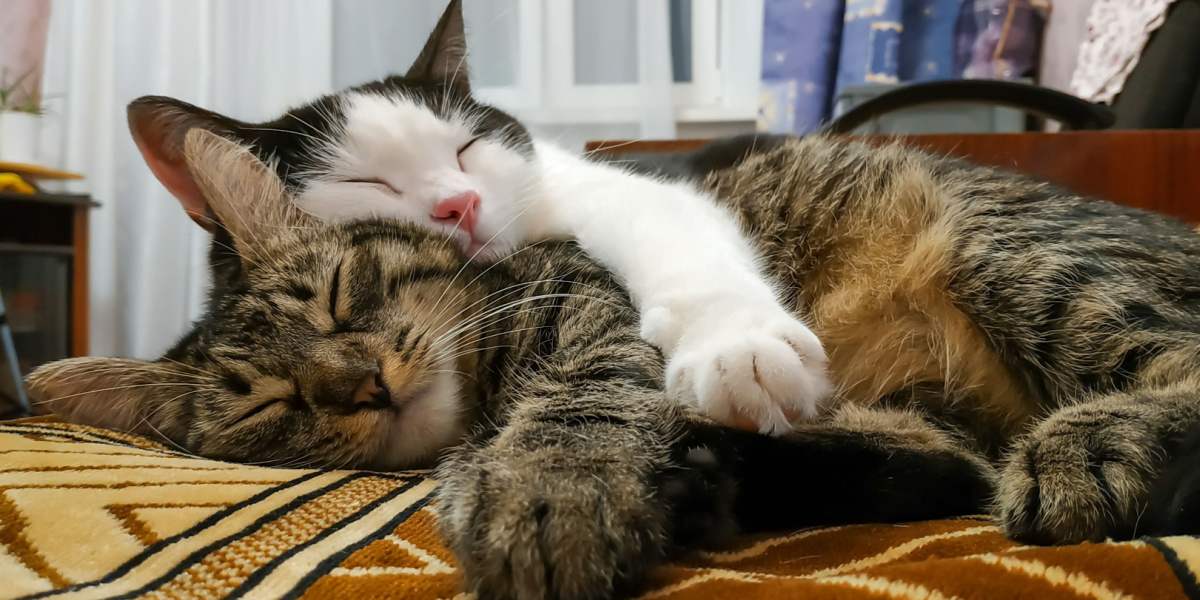
These days, doting pet parents want to understand our cats’ unique personalities, what makes them tick, and why they do the quirky things they do. One aspect of your cat’s individual characteristics that might be more difficult to fully understand is their sexuality.
Affectionate displays between cats, like mutual grooming, head butting, and co-sleeping are not sexual behaviors. In cats, mating is a purely instinctual behavior intended for reproduction. It's theoretically possible that cats can be gay, bisexual, or identify in another way, we have no scientific evidence to support this.Key Takeaways
With the long-awaited emphasis on education, understanding, and acceptance of the diversities of human sexualities, it’s natural to find yourself wondering whether feline sexuality is less straightforward than we’ve previously thought. So, can cats be gay, bisexual, or pansexual? Is it wrong to assume that all cats are heterosexual? Let’s find out.
What Does It Mean To Be Gay?
Defining “gay” when referring to humans is more complex than you might think. There are many different terms and labels that can often seem to overlap. In humans being gay doesn’t infer a sexual attraction; someone can be gay and asexual. Similarly, humans who are attracted to the same sex may be pansexual, bisexual, or homosexual. Some people use the term gay as an umbrella term to cover people who aren’t heterosexual, while others prefer the term to be strictly used for homosexuals.
For the purposes of this article, we’ll use the term gay to mean sexually attracted to the same sex.
Also Read: Sexing Kittens: How To Determine The Sex Of Your Kitten?
Why Is It So Tricky To Compare Human and Feline Sexuality and Behavior?
Just like humans, cats are individuals. So there’s likely to be some natural diversity. However, the problem with trying to compare kitty behavior to human behavior is that the concept of sexuality, in human terms, doesn’t really translate. Here are a few examples:
1. Affectionate Behavior Is Not Sexual
You might assume that if a cat curls up next to another cat, licks them, or nuzzles them with their head, it’s because they’re in love. So, if your male cat is super cuddly with another male cat, you might assume they’re gay.
However, displays of cat love, like mutual grooming, head butting (allorubbing), and co-sleeping are not sex behaviors. These behaviors can be a sign of closeness, trust, and friendship though, so it does mean that your cat has bonded with their buddy.
Also Read: Feline Genitalia Guide: What You Need To Know
2. Behavior That Seems Sexual May Not Be
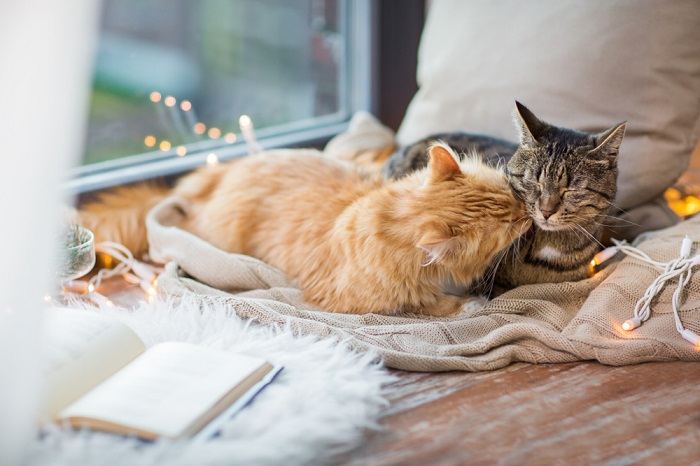
In cats, humping behavior is often not sexual in nature.
What about more obvious “sexual behaviors” like humping? If your cat humps a cat or another animal of the same sex, does that mean they’re gay? Although you’d be forgiven for assuming humping is sexual behavior, there are actually lots of reasons why cats hump other cats or objects. It’s not just male cats, either.
Female cats and neutered male cats will sometimes hump, too. Rather than being purely sexual, cats might hump because they’re excited or frustrated, to displace dominance, or just out of habit.
3. Cats Mate To Reproduce
If your female cat mates with a male cat, it’s because she’s in season and reproduction is in her instinct. There’s not so much weight on who the male cat is and what he looks like—female cats don’t have a “type” as some humans do!
The only criteria for sexual relations is that she’s in season and he’s there (and not neutered!). You might be surprised to know that once the season is over if she bumps into the same male cat that she mated with, she’s unlikely to give him the time of day, and might even become aggressive.
Because cats don’t form romantic feelings or romanticize their sexual encounters like humans might, it’s clear why not much information is available about their sexual identities. In fact, the only species other than humans that are known to have sexual interactions for pleasure are bottlenose dolphins.
4. We Can’t Read Their Minds
Starting a conversation with people about their sexuality is one of the ways to fully understand them. Of course, this isn’t an option when it comes to cats. Since you can’t ask them about their sexual identity, it may always remain just a bit of a mystery.
5. Cats Form Different Types of Relationships
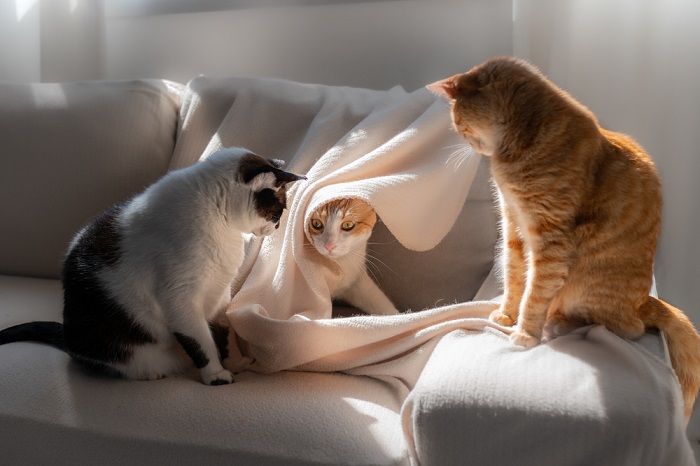
A cat might forget their sexual partner shortly after the encounter is over.
Just like we have different relationships with family members, friends, and romantic partners, not all cat relationships are the same. So, when you see your cat sharing a sweet moment with the cat next door, or enjoying friendly playtime with another of their cat housemates, that doesn’t mean they’re attracted to them.
Cats can bond with littermates, new kittens, adopted “siblings,” and even older cats. They form solid friendships and loving bonds, but this doesn’t seem to be based on sexual attraction, but rather on trust. They may form lifelong partnerships with cats they have a nonsexual bond with, but equally, their relationships can be transient.
In the cat world, exclusivity isn’t a thing. Just because your cat mated with one cat once, doesn’t mean they’re tied to them for life. It might seem promiscuous, but it’s just the feline way.
Can Cats Have Sexualities?
Cats do engage in sexual behavior, which means they must have a sexuality, but it’s not the same as human sexuality. Superficially, it might seem most likely that cats are heterosexual, because they tend to mate with the opposite sex to reproduce. However, that isn’t the whole story.
Can Cats Be Homosexual?
Just like some other animals, cats have been witnessed demonstrating typically sexual behaviors with the same sex. However, for the reasons discussed above, it’s pretty difficult to interpret that behavior accurately. Therefore, while it’s possible that cats can be gay, bisexual, or identify in another way, we’re lacking the evidence to be certain either way.
Final Thoughts
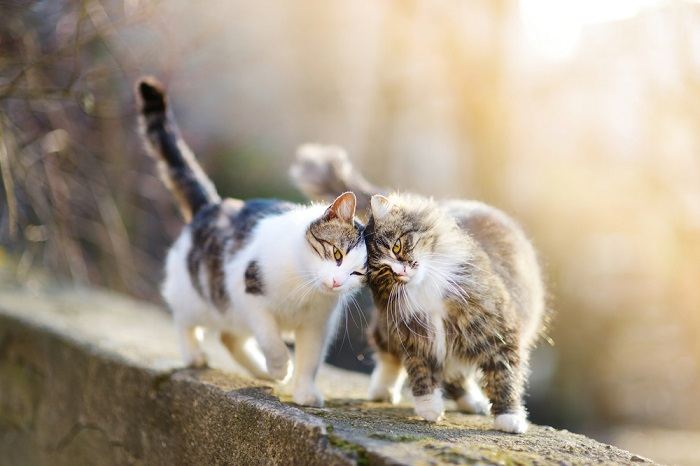
At this time, we can’t be certain whether cats have as diverse sexualities as people do.
Our cats are very important to us and are true members of the family. So, it’s easy to see why cat owners see them as humans and sometimes try to treat them as such.
However, at the moment there’s not enough evidence to be certain whether cats can have diverse sexualities as people do. Whatever your cat’s sexuality or sexual preference, the most important thing is that they’re happy and healthy.
Also Read: 10 Questions To Ask Before Adopting A New Cat
Frequently Asked Questions
Can cats and dogs be homosexual?
A number of studies into the sexual activity of animals and found that some cats and dogs (and other animals) have been known to engage with members of the same sex. However, what’s not known is whether this behavior is truly sexual in nature. This is because there are lots of motivations for feline behaviors that might appear sexual to humans.
Therefore, trying to place animals into human concepts doesn’t always work, and there's just not enough evidence to prove animal homosexuality at the moment.
Why is my cat a homosexual?
It’s impossible to know for sure whether your cat is homosexual, but they might be. The jury is out. Remember, cat behavior is very different from human behavior and can't be interpreted in the same way.
Why is my male cat humping my other male cat?
Cats might hump because they are frustrated, excited, or anxious. They might also do it out of habit. It’s not just entire male cats who hump, female cats and neutered males do too. This is because it's not always a testosterone fuelled behavior. Some cats hump each other, while others might hump objects like clothing, cushions, or blankets.
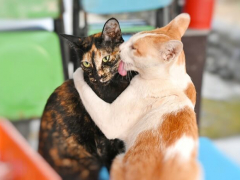




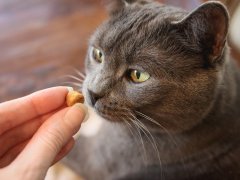

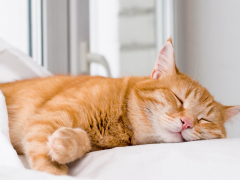
I have two male cats my son had found them next to his house they came up to him and he thinks that both brothers but they don’t look alike one of them is black fluffy and wants to have sex with the other male cat I don’t understand why he wants to do that but the gray and white one don’t should I separate them for different room that black one’s very shy but and wants to hump the other one but the other one doesn’t gets angry so I’m trying to figure what should do if I should separate them I love both of them because I lost my female cat last year in June she was 20 she passed away and it still bothers me I miss her so much I can’t nude these two cats right now cuz I’m not working because my injury now I’m having issues with my stomach so I don’t know what to do the gray white one very friendly he comes up to me and hugs me and kiss me and lays on me what should I do about this issue